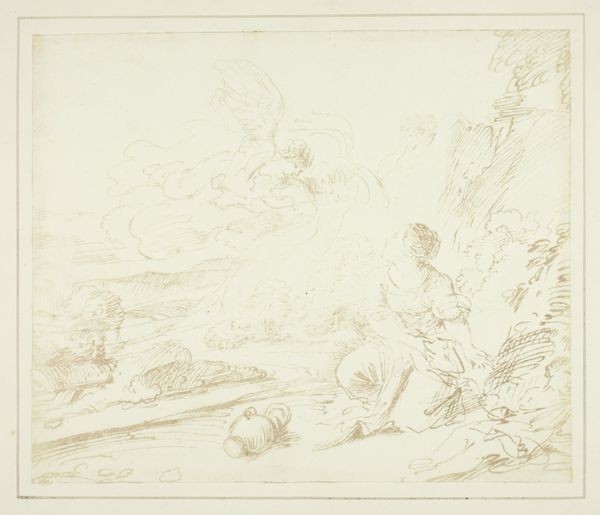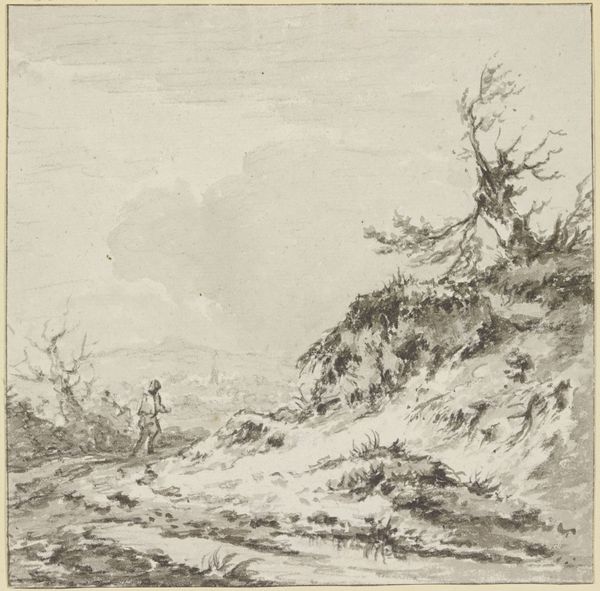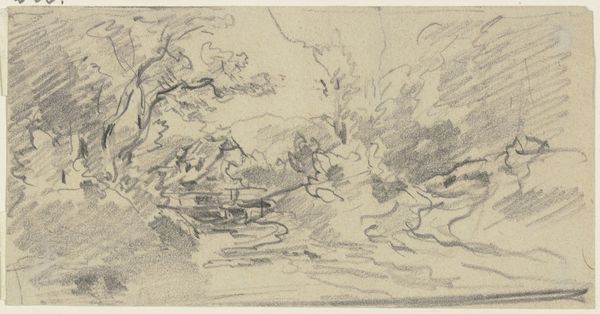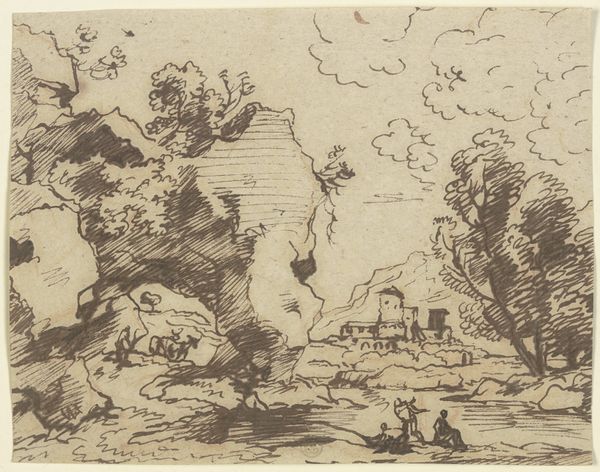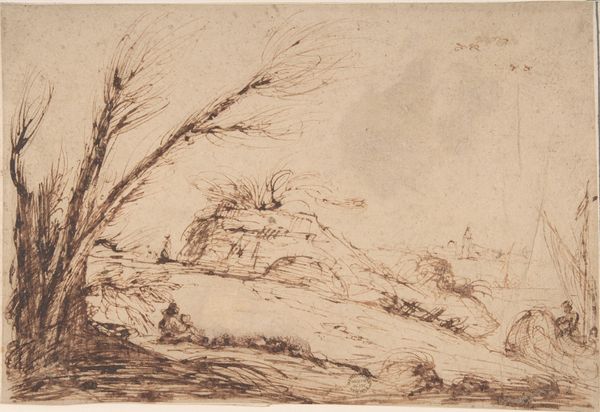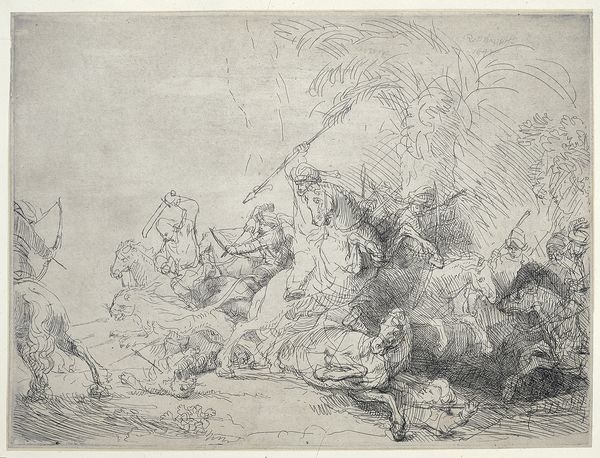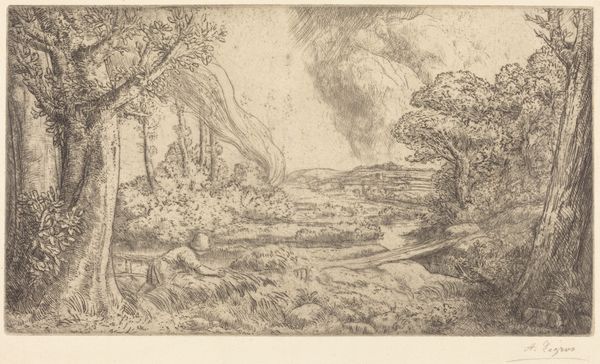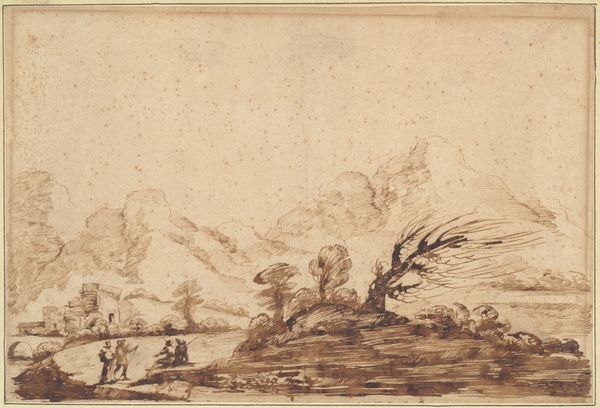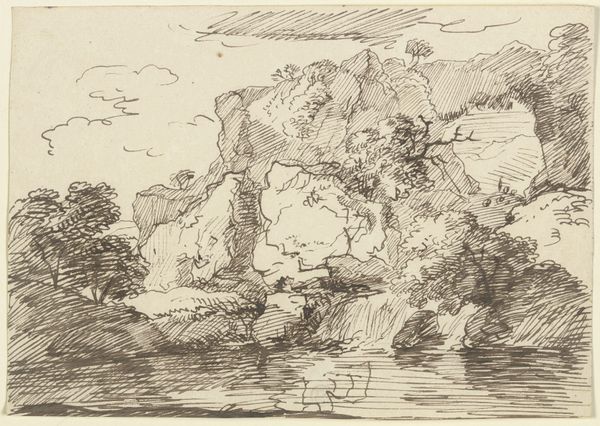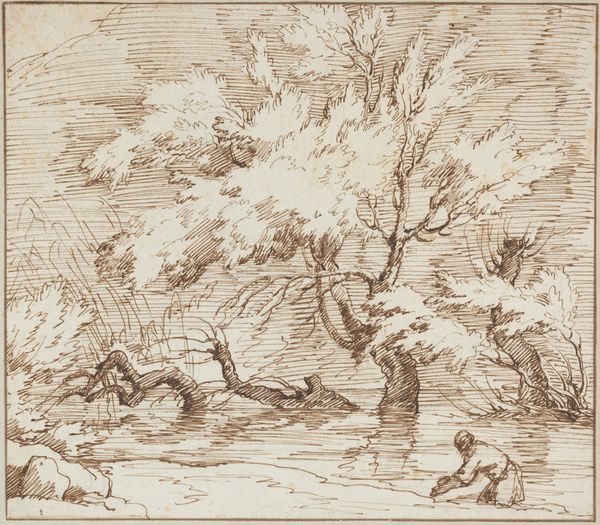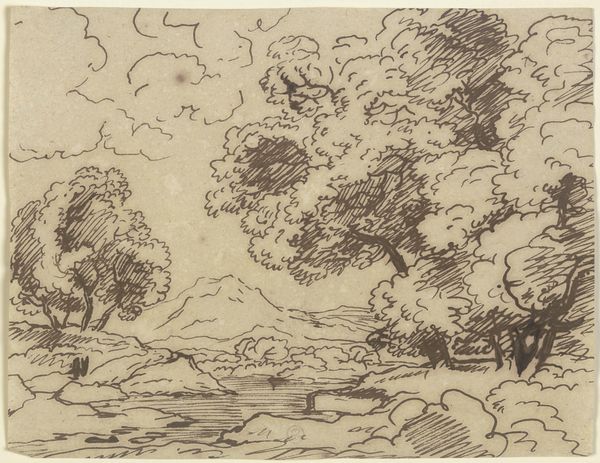
Flusslandschaft mit weidenden Kühen links und Ausblick auf eine Burg rechts
0:00
0:00
drawing, ink
#
drawing
#
landscape
#
ink
#
romanticism
#
15_18th-century
Copyright: Public Domain
Curator: Here we have Franz Kobell’s ink drawing, "River Landscape with Grazing Cows on the Left and a View of a Castle on the Right.” While the date of its creation remains unknown, the Städel Museum holds it within their collection. Editor: It’s incredibly atmospheric. The sweeping clouds, the suggestion of rainfall, and that distant castle...it creates a strong sense of romantic longing, wouldn't you agree? Curator: Absolutely. The artist really captured the emotional potential of nature here. And I’d note how the cows peacefully grazing serve as an anchor to the divine pastoral mood of this era, a clear signal of enduring values of natural and moral order. Editor: But the castle looms too, a counterpoint to the idyllic scene, representing perhaps, both aspiration and a touch of inevitable societal power. Is there perhaps also an elegiac symbolism at play, given that it is viewed at a distance and also ruined? Curator: Indeed. You see it in countless romantic-era paintings, ruins speaking volumes about history and impermanence. In this image the castle can been understood to be at conflict with its natural surroundings. A visual tension Kobell deliberately utilizes to speak to society's broader concerns about the natural and industrial orders during the romantic era. Editor: I am curious about Kobell’s landscape art's public and critical reception. Was this type of imagery a common feature of his work and that of his contemporaries, did his work reflect his cultural status, and was he more known as an engraver, or draftsperson, and how may these factor into interpreting his intention. Curator: Those are vital points of inquiry. I'd venture to say it has to do with his intent to reach a larger audience by making something reproducible, given his familiarity and facility with engraving, especially when you consider how ubiquitous such imagery became during the 18th- and early 19th-centuries. Editor: Right, the accessibility changes the artwork’s function—creating space for different kinds of ideological consumption in public discourse. It brings those romantic visions, in affordable prints, into homes. Curator: Exactly. An artistic snapshot capturing not just scenery, but the evolving dynamics between landscape, culture, and socio-political forces. Editor: So, as much as it reflects longing and an emotional experience of nature, it is also shaping a shared cultural imagination. Thanks for bringing out its multifaceted importance.
Comments
No comments
Be the first to comment and join the conversation on the ultimate creative platform.
